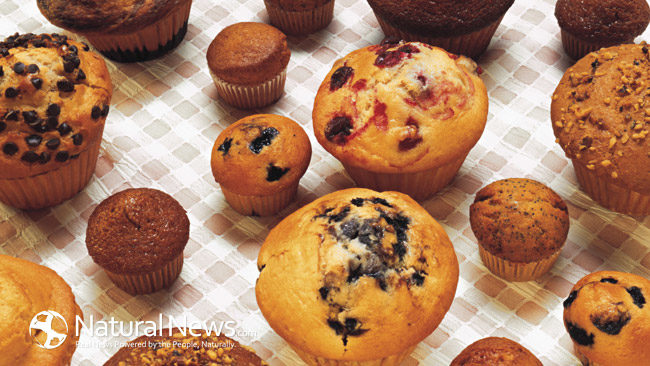When most of us look for ways to sneak vegetables into a diet, it’s usually for our kids. Children have undeveloped palates, but have the need for a balanced diet; the two are usually incompatible, so Moms everywhere get creative in sneaking nutrients into foods kids will eat. If you have rheumatoid arthritis (RA), you may find it necessary to do the same for yourself. Vegetables are essential for RA patients, as they contain vitamins necessary to combat the disease. Vegetables are also good sources of protein, and may serve an RA patient better than animal sources. This is not to say never eat an animal source of protein – just don’t get all of your protein this way. Here are ten ways to sneak vegetables into the diet of an RA patient without them suspecting their presence:
Smoothies, Anyone?
Smoothies are blends of fruits, ice, and generally yogurt, although you can be decadent and use a small amount of vanilla ice cream instead. You can hide a world of things inside a blueberry smoothie. Shred carrots in your food processor, or put them through a juicer, and use the carrot juice as a source of liquid in the smoothie. Save the carrot shreds for option two. You can also use parsnips this way, but be sure the smoothie will mask the taste.
Bake a Muffin – From Scratch
While some RA patients have gluten issues, not all of them do; if your RA patient is ok with flour products, bake some bran muffins for them. Include the carrot or parsnip shreds from your smoothie inside the batter, along with any berries you may have, such as blueberry, raspberry, or blackberry. You can also use applesauce, bananas, coconut, and nuts inside a muffin batter. The end result is a healthy baked good tasting absolutely fabulous.
It’s Not Your Mama’s Meatloaf
It’s amazing what you can hide inside a meatloaf. Carrot or parsnip shreds, ground chickpeas, ground green peas, and ground nuts go right inside, along with the eggs used as a binder. The eggs contribute vitamin D3 and Omega-3 fatty acids to the mix, making the meatloaf a healthy main dish as well as a way to eat your vegetables.
It’s Casserole Time
The casserole is an amazing dish – you can throw anything into a casserole and pretty much get away with it. Shredded green cabbage makes an awesome vegetable casserole, and the cheese topping add vitamin D3. Turnips, eggplants, rutabagas, squash – winter or summer – all cook up into wonderful side dishes, and your RA patient may not recognize the root (pardon the pun!) vegetable in use.
Chili
This southwestern dish makes use of beef and beans as its main ingredients. You can back off the amount of beef, or substitute poultry instead, if you’re concerned about the amount of animal protein, and load up on the vegetables. Shredded carrots, shredded parsnips, ground peas, and either red or black beans give chili a strong veggie punch, without the consumer’s knowledge.
Break Some Eggs
Eggs are a good source of vitamin D3 and Omega-3 fatty acids; using an omelet to hide fruits or vegetables is a good way to start the day. This is not the way to get strong-flavored vegetables into your RA patient; an omelet will not conceal the bitterness of eggplant or turnips, even if you reduce it with the slice-and-salt draining technique. You can use a variety of mushrooms, peppers, onions, tomatoes, avocados, or fresh strawberries, blueberries, or raspberries as fillers.
Flip Some Pancakes
Making pancakes out of whole-grain flour, and using nuts in the batter is a good way to get needed nutrients into somebody. You can make carrot and raisin pancakes, pecan pancakes, blueberry or blackberry pancakes, strawberry pancakes, banana pancakes – the list is pretty much limited only by your imagination. You can also make your own maple syrup, with pure maple sap and stevia, to limit problems with high fructose corn syrup and sugar.
Stuff It
Keeping the gluten issues of your RA patient in mind, make some stuffing. It doesn’t have to be for the holidays, either; you can roll and stuff a flank or skirt steak any day, and you can roll and stuff chicken or turkey as a main dish any time of year. What you put in your stuffing will generally be hidden by the bread. As long as it tastes good, your patient isn’t likely to notice shreds of vegetables inside. Again, don’t try to hide strong-flavored vegetables this way – you’ll out yourself to your patient.
Soup’s on
You can make soup out of practically any vegetable you can name. You may even get your RA patient to like some of the stronger-flavored vegetables inside a soup. Broccoli-cheese soup is one example, and you can put a whole host of other vegetables in the soup as well. Broccoli will cover the flavor of almost anything, and if the patient is willing to eat it, go for it, and tack on other vegetables as well.
Spice it up
Certain cuisines, such as Creole or Cajun, lend themselves to hiding vegetables inside other dishes. Red beans and rice is a Louisiana staple, and it’s usually served with Andouille sausage. Andouille, for those of you who aren’t familiar with it, is quite hot and spicy. You can hide vegetables in the Andouille, or in the red beans and rice. Jambalaya or gumbo are also good venues for disguising veggies.
However you choose to get extra vegetables into the diet of your RA patient, they will be better for it. You should use the disguises while you are trying to get them to eat the vegetables straight up. Eventually, a palate will develop and you can discontinue the subterfuge; until this happens, keep on sneaking them in, however you can.





